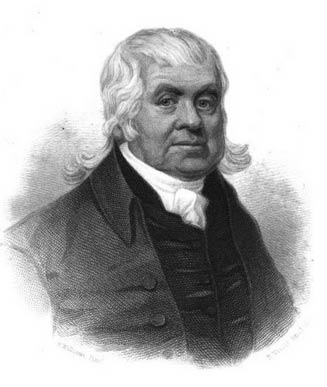Book Group - March 4, 3pm
Meet at church to discuss "An Unfinished Love Story" by Doris Kearns Goodwin, 2024. All are welcome. It is not necessary to have finished the book to participate. Any questions, please contact Peter Hornbeck.
Lectio Divina - Wednesdays at 4:00 p.m.
Reverent Janet is offering weekly Lectio Divina (sacred reading) sessions on Zoom, every Wednesday at 4:00 p.m., beginning on January 22. This is a spiritual practice in which we listen carefully to a poem and meditate on what words or phrases move us and inspire us. You are welcome to join each week or occasionally. The Zoom link is here: https://zoom.us/j/91553669747
Chalice Circles - Third Sunday after worship service.
BYOL - Bring Your Own Lunch at noon on Fridays
Fridays at noon, folks are encouraged to meet for lunch in the Williams Room (just inside the Church Street door). Though food will not be served, conversation and community will be shared. So bring a packed lunch from home and join us. We hope to see you soon!
Wisdom for All Ages
The Haudenosaunee Peacemaker Legend
The Five Nations accepted this message of peace, and together went to Tadadaho to convince him. They offered to allow the Onondaga Nation be the capital of the new Grand Council they were creating. He finally agreed, and the story goes that the messengers of peace combed the snakes from Tadadaho’s hair. The name ‘Hiawatha’ means, ‘he who combs.’
The five nations, later joined by the Tuscarora, formed what is known today as the Haudenosaunee Confederacy, which is governed by their Great Law of Peace. It emphasizes the power of Reason, not force. And it has three principles: Righteousness, Justice, and Health.
The Peacemaker advised the nations to send leaders to form a Grand Council, which made laws and decisions by consensus. This is one of the earliest examples of a democratic government. It turns out that one of America’s Founders, Benjamin Franklin, knew of the Haudenosaunee Confederacy and wrote of it as an example that the 13 American colonies could follow. And in fact, if you look on a dollar bill, on the back, you will see a bundle of 13 arrows clutched in one of the eagle’s talons.
(as read in Haudenosaunee Guide for Educators, Smithsonian Institute, National Museum of the American Indian – www.americanindian.si.edu.)

John Murray’s Miracle
Universalism has a founding myth – the story of what happened when our founder, John Murray, arrived in America.
It was late September, in 1770. John Murray, an English Methodist preacher who had been converted to Universalism, was stranded in rural New Jersey. John Murray had left England in despair. His wife and infant son had died, and suffering from depression, he had been unable to pay the debts he had incurred in caring for his ill wife. For a time he ended up in debtor’s prison, until a relative paid his debts.
Murray decided that he needed to make a completely new start. He renounced his religious career, vowing to never preach again, and he set sail for America.
Off the coast of New Jersey, the ship was blown off course and ended up stranded on a sand bar. And this is where it gets interesting.
Murray made his way to shore to seek food. He found his way to a nearby farmhouse, where he was greeted by the farmer, Thomas Potter. In Murray’s words, Potter told him, “I have longed to see you. I have been expecting you for a long time.” Thomas Potter was dedicated to inviting ministers who were passing through to preach to him and his neighbors, and had built a meetinghouse to hold services. Potter was a Universalist, and had been waiting for years to have a minister pass by who shared his theology. According to Murray, Potter told him, “The moment I beheld your vessel on shore, it seemed as if a voice had audibly sounded in my ears, ‘There, Potter, in that vessel cast away on that shore, is the preacher you have been so long expecting.’ I heard the voice, and I believed the report; and when you came up to my door and asked for the fish, the same voice seemed to repeat, ‘Potter, this is the man, this is the person, whom I have sent to preach in your house!’”
John Murray admitted that he had been a preacher, but that he had given it up. He told Mr. Potter that as soon as the wind changed, the ship would sail and he must be on it. Mr. Potter replied, “The wind will never change, sir, until you have delivered to us, in that meetinghouse, a message from God.”
A couple of days passed, with John Murray trying to get out of preaching, and Thomas Potter insisting that he would never be able to leave until he did. Murray wrote, “…it could not be denied that an overruling Power seemed to operate in an unusual and remarkable manner. I could not forebear looking back upon the mistakes made during our passage, even to the coming in to this particular inlet… (and) Mr. Potter’s assurance that he knew I was on board the vessel..”.
Sunday morning arrived. John Murray preached. Again, in Murray’s words: “Immediately upon my return (from the meetinghouse) the boatmen entered the house. ‘The wind is fair, sir.’ ‘Well, then, we will depart.’”
Depart they did. It was September 30, 1770. That day began John Murray’s public ministry in America, up and down the eastern seaboard, from Cape Good Luck in New Jersey all the way to Gloucester. The rest, as they say, is history. We are left to ponder the myth, and to carry on the legacy, as his first congregation. Do you believe in miracles?
— Rev. Janet Parsons
